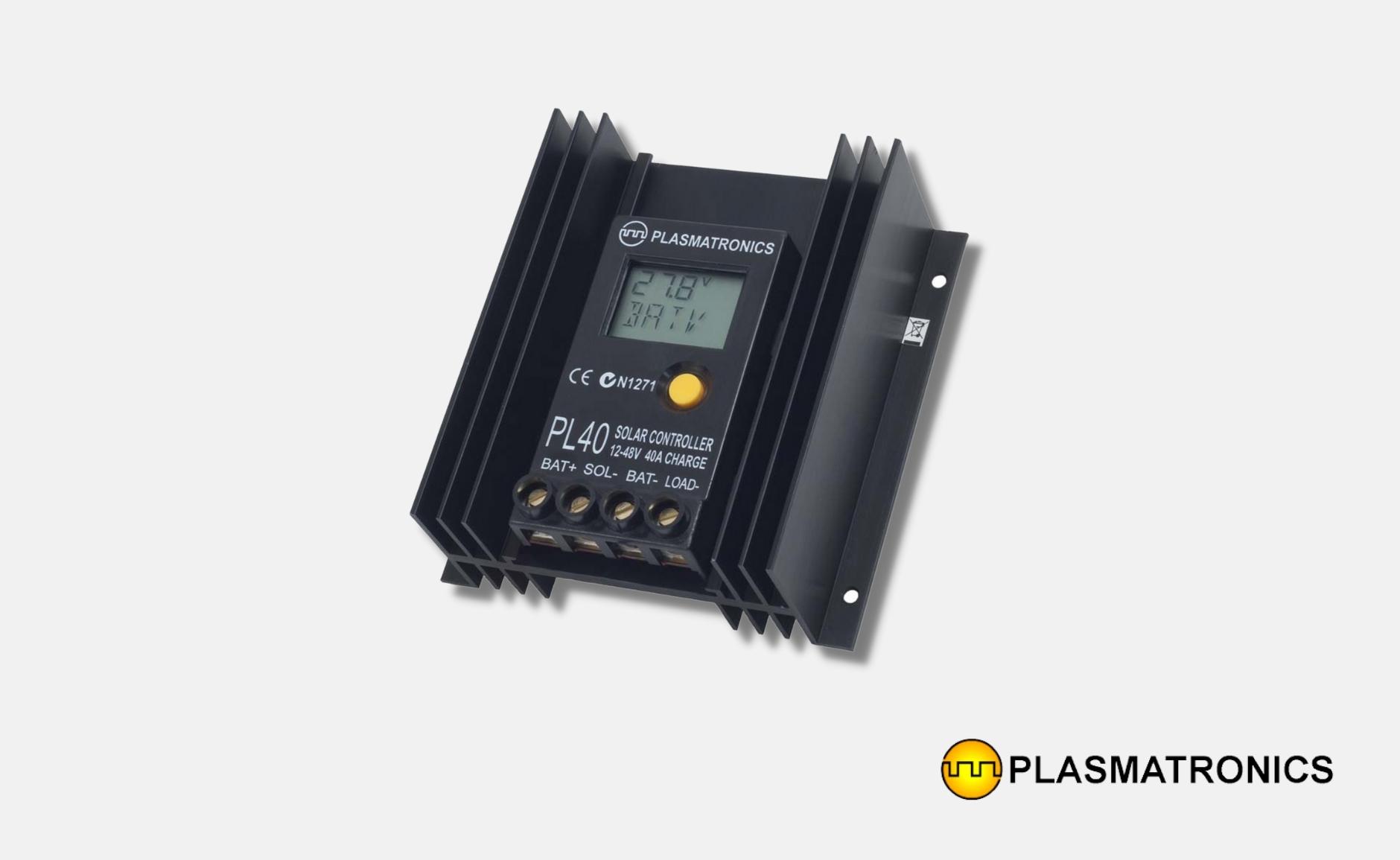The regulator (a.k.a. solar charge controller) is the babysitter that ensures your battery is looked after.
It manages the power from the solar panel(s) and regulates it on it’s way to the battery.
Factors to consider when choosing your regulator.
1) PWM or MPPT control method?
- PWM is the traditional regulation method while MPPT is now probably the most popular method.
- PWM is mostly used in small 12V or 24V systems, while MPPT is more common with any large array or 48V battery system.
- Both come in an extensive range of brands, models and sizes. Both also have a huge range of built-in and/or optional features.
| Type | Advantages | Disadvantages |
| PWM | - Low cost - Usually small & compact |
- Restricted panel choice - May need large gauge cable |
| MPPT | - Can be used with any* panel - Allows higher array voltages, reducing parallel protection & cable gauge requirements as well as allowing more flexible location choices for arrays by reducing voltage drop factors - Can offer more output from the array compared to a PWM** |
- Higher cost - Often fairly bulky |
| * MPPTs need the array voltage to be at least 5V higher than the required battery charging voltage (Vmp), after fatoring in the voltage loss expected at high operating temperatures (e.g. 60-75°C). | ||
| ** Depending on the array temperature and battery charge state, MPPTs will usually charge faster and can yield ~30% more energy than a PWM. | ||
2) What size to choose (current rating)?
- PWM regulators are always rated in battery charging current. Since the array voltage must be the same nominal rating as the battery, this battery charging current is also by default the expected array output current. So the choice of regulator size is calculated based on the combined parallel output current of the array (usually Isc plus a 25% buffer).
- MPPT regulators are also rated in battery charging current. However, since the array will usually be at a higher voltage than the battery, the panel current ratings are not an indicator of the required regulator size. Instead, use the total array power capacity (Pmp), apply the 25% buffer and correct for the maximum battery charging voltage. This will tell what the required regulate Amp rating will be.
- PWM regulators can be either fixed to a single battery voltage (e.g. 12V only) or suitable for use with a range of battery voltages (e.g. 12/48V or 12-48V). Be sure to choose a model that suits your battery voltage.
- MPPT regulators are usually compatible with several battery voltages. As with PWMs, be sure to choose a model that suits your battery voltage.
- MPPT regulators will also always have an array voltage ceiling. Since arrays on MPPTs are usually built with series strings it is essential to keep the tempcorrected string Voc below the regulator ceiling. Exceeding the voltage ceiling WILL destroy the regulator.
- For MPPT voltages you also need to consider the licenses of the technicians who will be installing the system or conducting maintenance work in the future. Many regulators allow array voltages that exceed the 120VDC ceiling of “ELV” so technicians without an electricians license are not permitted to work with them.
- Some regulators are very basic and offer no extra features of on-site flexibility. Other allow the installer to choose from a few pre-set battery charging profiles (e.g. flooded lead vs sealed lead).
- More advanced models will offer a growing list of built-in features, such as:
- Fully programable charge settings (i.e. can suit any* battery)
- Load output connections, options both with and without LVD
- Relay contact(s) for auto-start generators or user warning signals, etc
- Basic LED indicators or LCD meters for details viewing & programming
- Bluetooth coms for view/programming via phone Apps
- And more!
- Many mid-range models have communications ports that support a range of optional upgrade accessories. These can include:
- LCD meters and display screens
- Communications connectivity via RS232, RS485, Ethernet, Bluetooth
- Modems for direct device connectivity to online monitoring portals
- LVD protections
- Shunts to monitor battery SOC
- External sensors to monitor battery temp and/or voltage
- And more!
- Most regulators will de-rate as their heat sink temperature rises. To ensure the system performs as required be sure to consider how well ventilated (or not!) the housing will be so the regulator can perform as needed when the mercury rises!
- All regulators should be installed in a protected environment (i.e. an equipment room or dedicated enclosure!), but some are more ‘foolproof’ than others.
- Some of the extra treatments that are available include conformal coatings on circuit boards or full epoxy encapsulation for an even higher rating.
- Many models also have included or optional covers to shield their cable entry areas to comply with regional codes or installer needs.
- Most regulators are supplied with screw terminals for the connection of the solar array wires, but some offer MC4 connectors for direct plug-in from solar panels**.
- Most regulators are wall mounted in the vertical orientation. Some may be installed horizontally and some may be installed on DIN rail.
WANT TO GET IN TOUCH?
Complete the form below to have RFI's solar team contact you.

.png)




